Pilus Infections
Type IV pili are versatile surface appendages found in a variety of bacteria, including Pseudomonas aeruginosa and Neisseria gonorrhoeae. These pili play a crucial role in diverse processes, such as motility, adherence, and biofilm formation. Biofilms are complex communities of microorganisms embedded in a self-produced extracellular matrix, providing protection against host defenses and antibiotics. In chronic infections, bacteria often form biofilms, making eradication more challenging. Type IV pili contribute to the initial attachment and subsequent development of biofilms. Pseudomonas aeruginosa, for example, utilizes type IV pili to adhere to surfaces and other bacterial cells, facilitating biofilm formation in conditions like cystic fibrosis lung infections. Understanding the role of type IV pili in biofilm formation is vital for developing strategies to disrupt these structures and improve the efficacy of antimicrobial treatments. Research in this area explores the molecular mechanisms underlying pilus-mediated biofilm formation and seeks innovative approaches to prevent or disperse bacterial biofilms, addressing the challenges posed by chronic infections.

Francis J Castellino
University of Notre Dame, United States
Ranjan Ramasamy
ID-FISH Technology, United States
Saurabh Chattopadhyay
University of Kentucky College of Medicine, United States
Rico Leonardo Lizbinski
Northern Light Health, United States
Sasha Leibholz
New York Presbyterian Columbia/Cornell, United States
Lauren Gruffi
New York Presbyterian Columbia/Cornell, United States



Title : Changing population immunity to COVID-19 in the context of infection, vaccination, and emerging SARS-CoV-2 variants
Ranjan Ramasamy, ID-FISH Technology, United States
Title : Extensively drug-resistant bacterial infections: Confronting a global crisis with urgent solutions in prevention, surveillance, and treatment
Yazdan Mirzanejad, University of British Columbia, Canada
Title : Bioterrorism through the ages: Historical perspective, emerging threats, and medical countermeasures
Claudia Ferreira, Sorbonne University, France
Title : Measles vaccination coverage indicators in 2023 and advance towards measles elimination and eradication by 2030
Pedro Plans Rubio, College of Physicians of Barcelona, Spain
Title : Pathogen-derived noncanonical epitopes: Are they valuable targets for novel vaccinations and shall we be concerned about autoimmune responses?
Michele Mishto, Francis Crick Institute, United Kingdom
Title : Severe influenza and other related respiratory infection cases during Omicron era in Japan
Masafumi Seki, Saitama Medical University International Medical Center, Japan